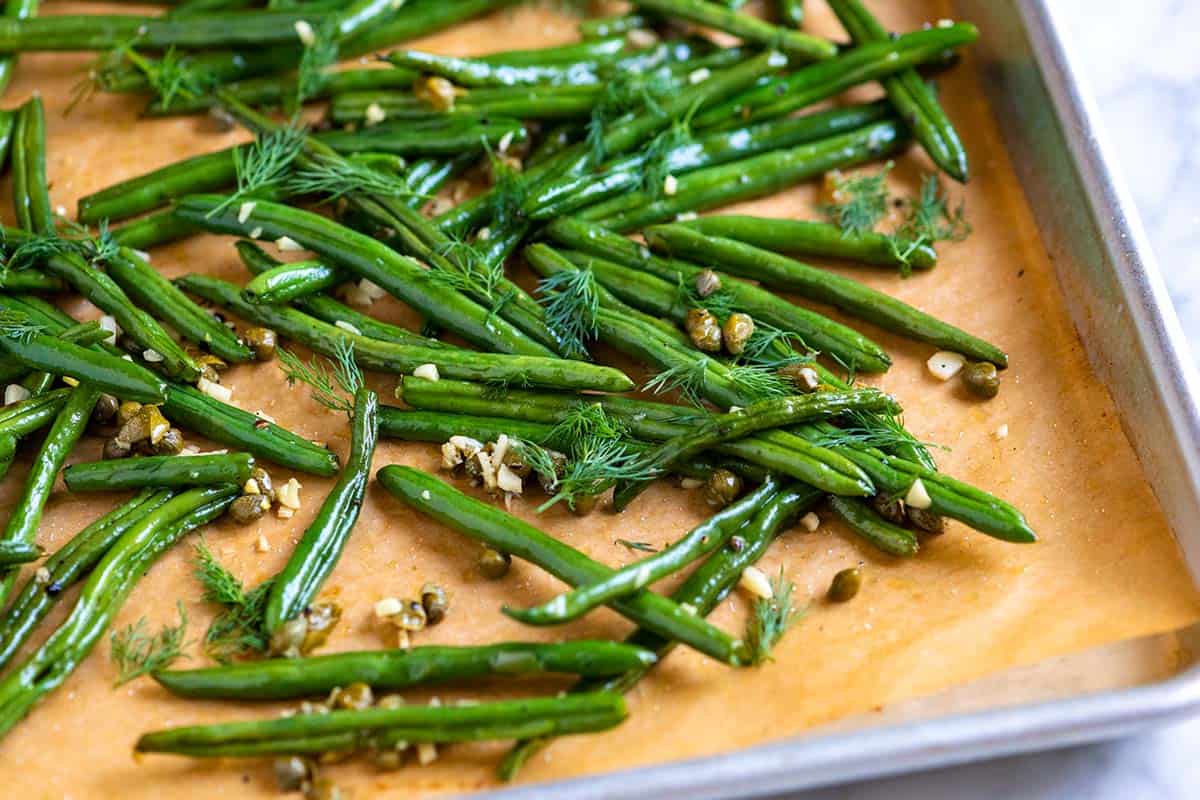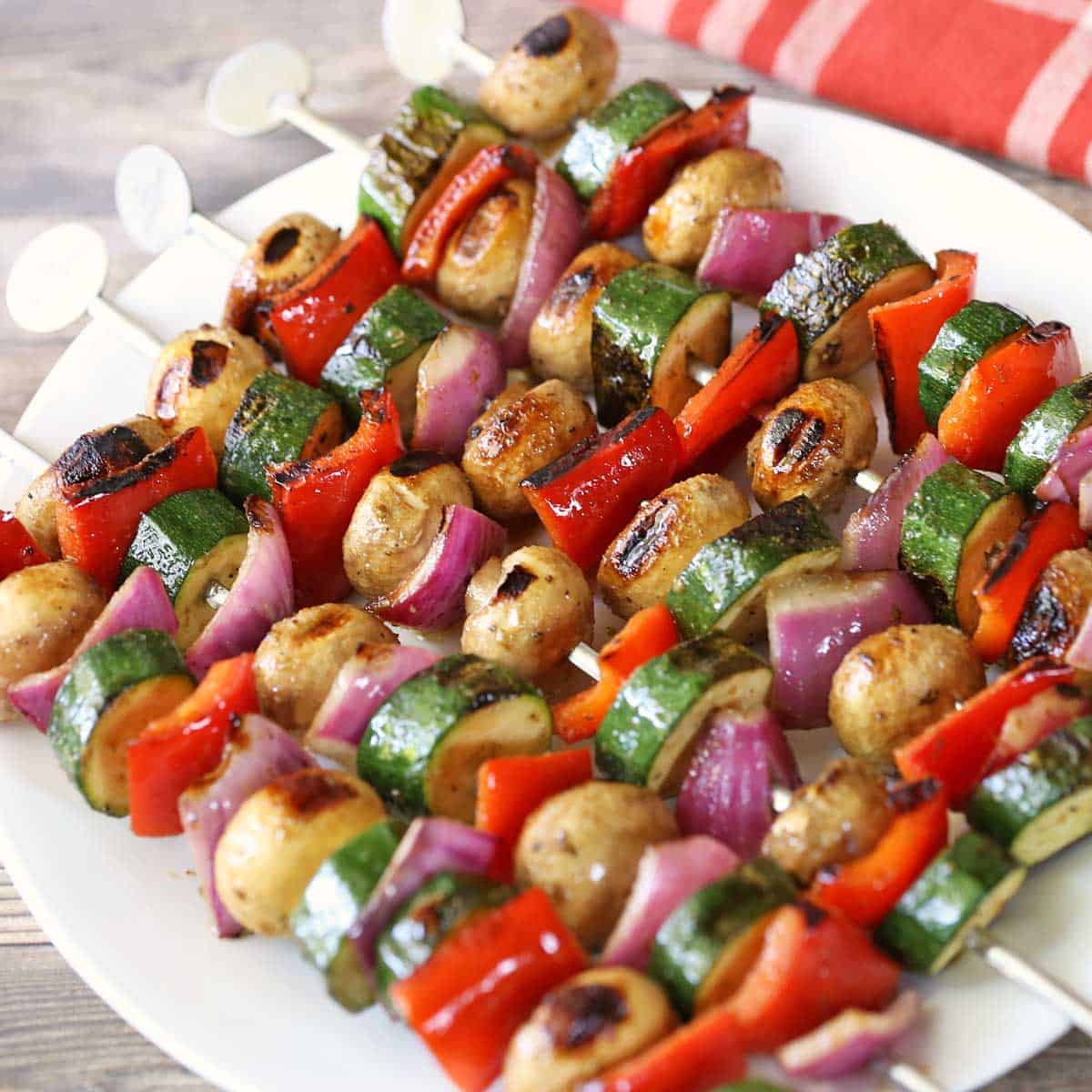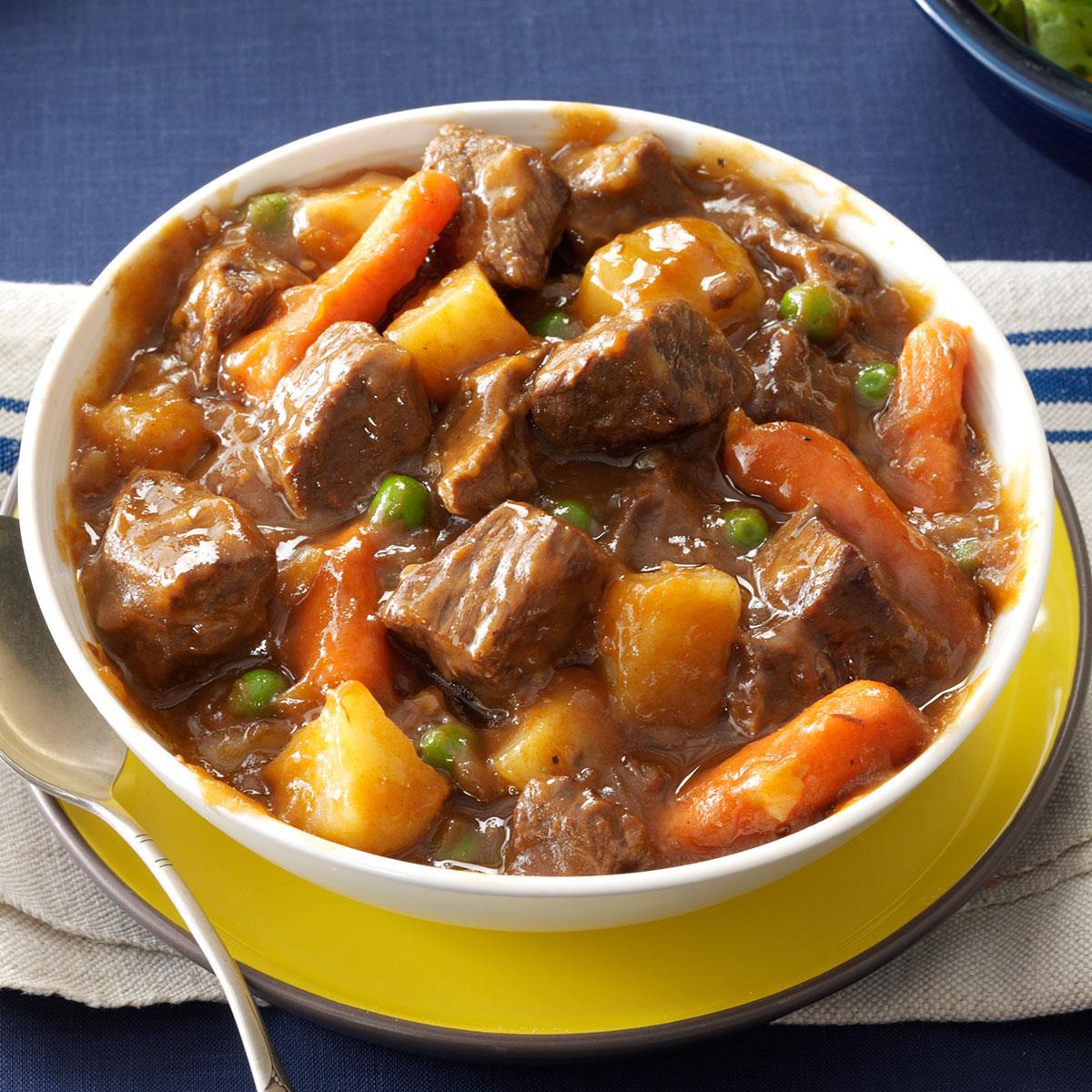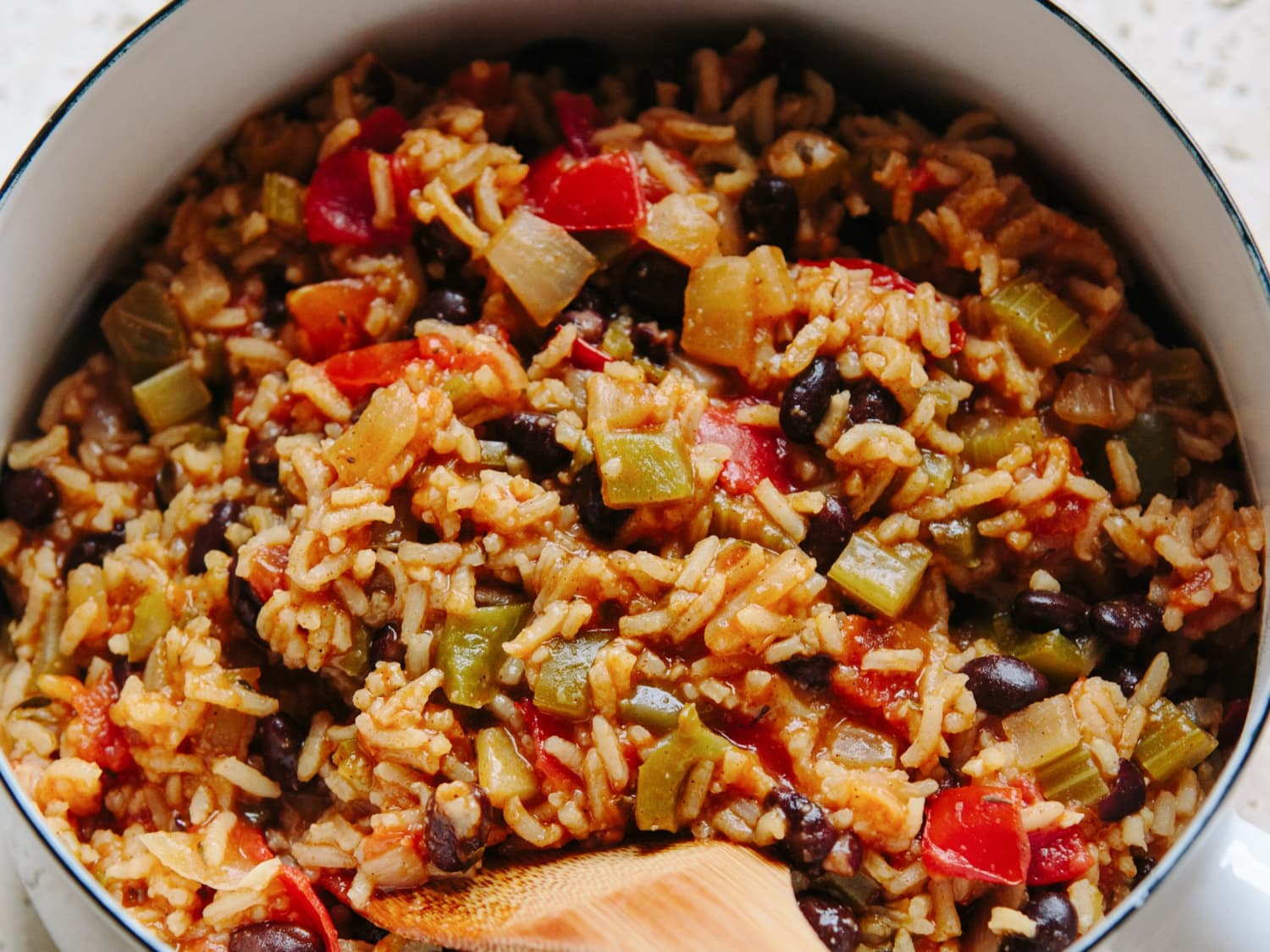Home>Gardening News and Trends>Latest News>What Vegetables Go Well With Spaghetti
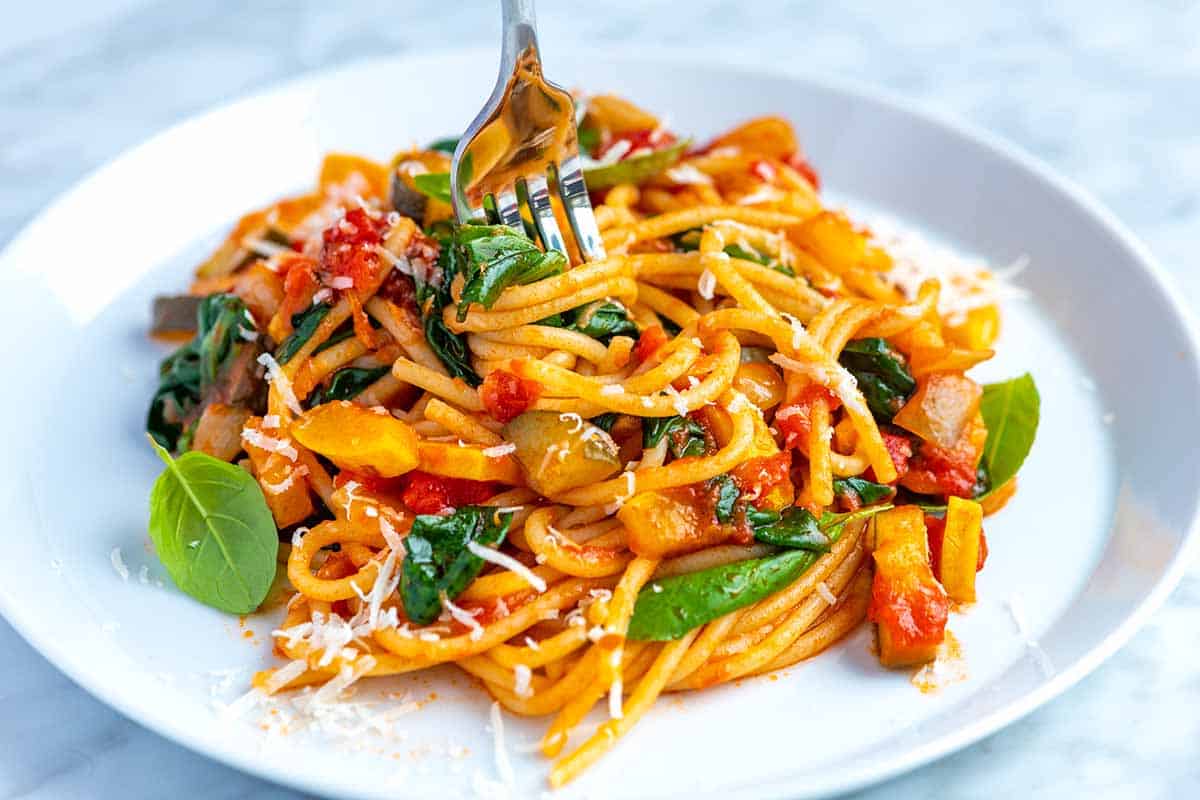

Latest News
What Vegetables Go Well With Spaghetti
Modified: January 22, 2024
Discover the latest news on what vegetables pair perfectly with spaghetti. Learn how to create delicious and nutritious spaghetti dishes with the right vegetable combinations.
(Many of the links in this article redirect to a specific reviewed product. Your purchase of these products through affiliate links helps to generate commission for Chicagolandgardening.com, at no extra cost. Learn more)
Table of Contents
Introduction
When it comes to preparing a delicious and satisfying spaghetti dish, it’s not just about the pasta and sauce. Adding vegetables to your spaghetti can elevate the flavors, provide added nutrients, and make it a more well-rounded meal. But choosing the right vegetables to go with spaghetti can be a bit overwhelming, especially if you’re looking for exciting combinations that bring out the best in each ingredient.
Luckily, we’ve got you covered! In this article, we’ll explore a variety of vegetables that pair exceptionally well with spaghetti. Whether you’re a vegetarian looking for a meatless option or simply want to add some extra freshness and color to your spaghetti dish, these vegetable suggestions will surely inspire you to create a mouthwatering and wholesome meal.
From classic choices like tomatoes and onions to more adventurous options like zucchini and eggplant, each vegetable brings its unique flavors and textures to the table. By experimenting with different combinations and cooking techniques, you can create endless variations of spaghetti dishes that are both delicious and nutritious.
So, let’s dive into the world of spaghetti and discover the vegetables that can take your pasta dish from ordinary to extraordinary. Get ready to tantalize your taste buds and explore the endless possibilities of combining vegetables with spaghetti!
Tomatoes
When it comes to pairing vegetables with spaghetti, tomatoes are an absolute classic. Not only are they packed with flavor, but their vibrant red color also adds a visually appealing element to your dish. Tomatoes can be used in various forms, such as fresh, canned, or as tomato sauce, allowing for versatility in your spaghetti creations.
One of the most traditional ways to incorporate tomatoes into your spaghetti dish is by preparing a classic tomato sauce. By sautéing garlic and onions in olive oil and adding diced or crushed tomatoes, you can create a rich and aromatic base for your spaghetti. You can customize the sauce by adding herbs like basil or oregano for an extra layer of flavor.
If you prefer a lighter and fresher approach, you can use cherry tomatoes. Sauté them in olive oil with garlic, salt, and pepper until they burst open and release their juices. Toss this vibrant tomato confit with cooked spaghetti, and you’ll have a simple yet flavorful pasta dish.
For a unique twist, you can also try using sun-dried tomatoes. These concentrated bursts of flavor add a deep umami taste to your spaghetti. Chop them up and mix them into your tomato sauce or use them as a topping along with fresh basil and Parmesan cheese.
If you’re feeling a bit more adventurous, you can even roast tomatoes in the oven until they become soft and caramelized. The roasting process intensifies their sweetness and enhances their flavor profile, making them an excellent addition to any spaghetti dish.
Remember, tomatoes also work well in combination with other vegetables. For example, you can create a medley of flavors by sautéing bell peppers, onions, and tomatoes together before mixing them with spaghetti. This colorful and nutritious option will satisfy both your taste buds and your eyes.
Overall, tomatoes are a versatile and delicious vegetable that pairs wonderfully with spaghetti. Whether used in sauce form, sun-dried, roasted, or in combination with other veggies, tomatoes have the power to elevate your spaghetti dish to new heights of flavor.
Bell Peppers
Bell peppers are another fantastic vegetable option to consider when it comes to enhancing your spaghetti dishes. Not only do they come in a variety of vibrant colors like red, yellow, and green, but they also bring a satisfying crunch and a sweet, slightly tangy flavor to the table.
When using bell peppers with spaghetti, you have a few different preparation options. One classic approach is to slice them into thin strips and sauté them for a few minutes until they become slightly tender. This method allows the natural sweetness of the peppers to shine through and adds a delightful texture to your spaghetti dish.
If you’re looking for a more intense flavor profile, you can try roasting the bell peppers. This process brings out their natural sweetness and adds a smoky, caramelized taste. Simply place the peppers under a broiler or directly on the flame until the skin is charred. Allow them to cool, then peel off the charred skin, remove the seeds, and slice the roasted peppers to toss into your spaghetti.
For those who prefer a fresh and crisp element in their spaghetti, you can chop the bell peppers into small pieces and add them raw to your pasta. This will introduce a refreshing crunch and a burst of vibrant color to your dish.
Bell peppers also complement other vegetables and can be combined in numerous ways to create a harmonious blend of flavors. You can sauté them together with tomatoes and onions for a flavorful trio or toss them with other veggies like zucchini and mushrooms for a diverse and satisfying spaghetti experience.
Regardless of the preparation method you choose, bell peppers are a versatile and tasty addition to any spaghetti dish. Their bright colors, crisp texture, and sweet tanginess bring a delightful contrast to the richness of the pasta and sauce. So, don’t hesitate to experiment with bell peppers and create a spaghetti dish that is as visually stunning as it is delicious.
Onions
Onions are a staple ingredient in countless dishes, and spaghetti is no exception. These versatile vegetables add a depth of flavor and aroma to your spaghetti, making it even more satisfying and delicious.
One popular way to incorporate onions into your spaghetti is by sautéing them. Begin by slicing the onions into thin strips or dicing them, then cook them in a bit of olive oil until they turn translucent and slightly caramelized. The sweet and savory notes of the cooked onions will infuse the sauce, enhancing its overall taste.
If you’re a fan of bold flavors, you can take it a step further and caramelize the onions. This process involves cooking them slowly in butter or olive oil over low heat until they turn a rich golden brown. The caramelized onions will bring a delightful sweetness to your spaghetti and add a touch of complexity to the dish.
For those who enjoy a bit of crunch in their spaghetti, you can also add raw onions as a topping or mix them in with the cooked pasta. Just make sure to slice the onions as thinly as possible to avoid overpowering the other flavors.
Onions also work well with other vegetables, creating a flavorful combination. For example, you can sauté onions together with bell peppers and tomatoes for a vibrant and aromatic sauce. The combination of these veggies adds texture, color, and a fantastic taste to your spaghetti.
Keep in mind that the type of onion you choose can also have an impact on the flavor profile. Sweet onions, such as Vidalia or Walla Walla, have a milder taste and work well in dishes where you want to highlight the natural sweetness. On the other hand, red onions offer a slightly sharper and more assertive flavor, which can provide a pleasant contrast to the richness of the pasta and sauce.
Overall, onions are an essential ingredient when it comes to enhancing the flavor of your spaghetti. Whether cooked, caramelized, or raw, they add depth and complexity to the dish, making it a more satisfying and memorable experience.
Garlic
Garlic is a must-have ingredient when it comes to cooking spaghetti. Its pungent aroma and distinct flavor add a rich and savory element to the dish. Whether you prefer a subtle hint of garlic or a bolder taste, this versatile vegetable can be used in various ways to elevate your spaghetti to new heights.
One classic method of incorporating garlic into your spaghetti is by mincing or finely chopping it and sautéing it in olive oil. This technique allows the garlic to release its natural oils, infusing the oil with its intense aroma and flavor. The garlic-infused oil can then be used as a base for your sauce or drizzled over cooked spaghetti to enhance its taste.
If you’re a garlic aficionado, you can turn up the heat and roast whole garlic cloves. To do this, cut off the top of a garlic bulb, drizzle it with olive oil, wrap it in foil, and roast it in the oven until the cloves turn soft and golden. Once roasted, you can squeeze the cloves out of their skins and either mix them into your sauce or spread them over cooked spaghetti for a robust garlic flavor.
For a milder garlic taste, you can blanch the cloves in boiling water before using them. This technique helps to soften the harshness of raw garlic, making it more palatable while still retaining its essence.
Another way to incorporate garlic into your spaghetti is by infusing the garlic flavor directly into the sauce. Simply slice a few cloves of garlic and add them to your tomato sauce or other base sauces as it simmers on the stove. This method allows the garlic to infuse its flavors into the sauce, creating a rich and aromatic experience for your taste buds.
Garlic is also a wonderful complement to other vegetables in spaghetti dishes. For instance, sautéing garlic along with onions, bell peppers, and mushrooms creates a savory and fragrant medley of flavors. The garlic enhances the taste of the other ingredients, resulting in a harmonious and satisfying combination.
Remember, a little garlic goes a long way, so adjust the amount to your personal preference. Whether you want a subtle undertone or a robust garlic punch, this versatile vegetable is sure to enhance the overall taste of your spaghetti.
Mushrooms
Mushrooms are a fantastic addition to any spaghetti dish, providing a burst of earthy flavors and a unique texture. With a wide variety of mushrooms available, you can experiment with different types to create diverse and flavorful spaghetti creations.
One popular choice is the classic button mushroom. These versatile mushrooms have a mild flavor and a slightly meaty texture, making them a perfect addition to your spaghetti. Sauté them in butter or olive oil until they become golden brown and slightly caramelized. This process enhances their natural flavors and adds depth to your dish. You can also slice them thinly and add them raw to your cooked spaghetti for a fresh and crunchy element.
If you’re looking for a more intense, umami-rich flavor, consider using cremini or portobello mushrooms. These mushrooms have a deeper taste and a denser texture, providing a substantial bite to your spaghetti. Roasting or grilling the portobello mushrooms before slicing them and mixing them into your spaghetti can add a smoky and robust flavor that pairs well with rich sauces.
For a gourmet touch, you can opt for more exotic mushroom varieties like shiitake or oyster mushrooms. These mushrooms have a distinct flavor profile that can lend a unique and sophisticated taste to your spaghetti. Sauté them with garlic and herbs for added depth or toss them with cooked spaghetti to create a delightful umami-packed dish.
Mushrooms also work well in combination with other vegetables. You can sauté them with onions, garlic, and bell peppers for a flavorful medley of ingredients. Their earthy taste complements the other components, resulting in a well-balanced and satisfying spaghetti dish.
Whether you choose to use button mushrooms, cremini, portobello, or more exotic varieties, mushrooms bring a rich and savory element to your spaghetti. Their versatile nature allows them to be prepared in different ways, offering endless possibilities for creating unique and delicious pasta dishes.
Zucchini
Zucchini is a versatile and nutritious vegetable that can add a refreshing and vibrant element to your spaghetti dishes. With its mild flavor and tender texture, zucchini pairs well with various ingredients, making it an excellent choice to incorporate into your pasta creations.
A popular way to use zucchini in spaghetti is by spiralizing it into zucchini noodles, also known as “zoodles”. These vegetable noodles provide a lighter and healthier alternative to traditional pasta. You can sauté the zucchini noodles in a bit of olive oil or toss them with your favorite sauce for a low-carb and veggie-packed meal.
If you prefer a more tender zucchini texture, you can slice it into thin rounds or half-moons. Sauté the slices in a pan with olive oil until they turn slightly golden brown and develop a caramelized flavor. This method enhances the natural sweetness of zucchini while adding a delightful crunch to your spaghetti.
For a burst of color and flavor, you can also incorporate sliced or diced zucchini into your spaghetti sauce. Add them to your simmering sauce, and they will soften and blend with the other ingredients, giving your sauce a delightful veggie boost.
Zucchini also works well in combination with other vegetables. For a vibrant and nutritious spaghetti dish, add sautéed zucchini to a medley of bell peppers, tomatoes, and mushrooms. This colorful mix creates a visually appealing plate and a tantalizing blend of flavors.
If you’re feeling adventurous, you can even stuff zucchini with a mix of cooked spaghetti and other ingredients. Simply hollow out the zucchini halves, fill them with your desired spaghetti filling, sprinkle some cheese on top, and bake them until they are tender and golden. This creative twist adds a unique touch to your spaghetti dish, impressing both your taste buds and your guests.
Overall, zucchini brings a fresh and nutritious element to your spaghetti dishes. Whether spiralized, sautéed, or combined with other vegetables, it adds a vibrant and delightful touch to your meal.
Spinach
Spinach is not only a versatile leafy green but also a nutritional powerhouse that can elevate your spaghetti dishes. Packed with vitamins, minerals, and antioxidants, spinach adds a vibrant color, a satisfying texture, and a mild, slightly earthy taste to your pasta creations.
One classic way to incorporate spinach into spaghetti is by wilting it down. Simply add a handful of fresh spinach leaves to your cooked pasta and toss until the heat wilts the leaves. This quick and easy method allows the spinach to retain its vibrant green color, while its mild flavor blends beautifully with the pasta and sauce.
If you prefer a more substantial presence of spinach, you can sauté it before adding it to your spaghetti. Heat some olive oil or butter in a pan, add minced garlic, and then toss in the spinach until it wilts and reduces in size. This technique helps to intensify the flavors of the spinach, making it a delightful addition to your pasta.
For a creamy and indulgent twist, you can also create a spinach and ricotta filling. Lightly steam or blanch the spinach, and then mix it with ricotta cheese, grated Parmesan, and seasonings. Stuff this mix into jumbo pasta shells or layer it between lasagna noodles for a delicious and wholesome spinach-infused spaghetti dish.
Spinach also pairs exceptionally well with other vegetables. Consider adding sautéed spinach to spaghetti dishes featuring cherry tomatoes, mushrooms, or roasted red peppers. The combination of flavors and textures will create a delightful harmony in your pasta creations.
Not only does spinach enhance the taste and appearance of your spaghetti, but it also brings a plethora of health benefits to the table. Being rich in iron, calcium, vitamins A, C, and K, and various antioxidants, spinach contributes to a well-rounded and nutritious meal.
Incorporating spinach into your spaghetti is a delicious and effortless way to amp up both the flavor and the nutritional value of the dish. So, don’t hesitate to experiment with this leafy green to create vibrant and wholesome spaghetti creations.
Eggplant
Eggplant is a versatile vegetable that adds a unique and hearty element to your spaghetti dishes. With its meaty texture and mild flavor, eggplant brings a satisfying and substantial component to any pasta creation.
One popular way to incorporate eggplant into spaghetti is by roasting or grilling it. Cut the eggplant into slices or cubes, brush them with olive oil, and cook them until they become tender and slightly charred. This cooking method enhances the natural sweetness of the eggplant and adds a smoky flavor, making it a perfect addition to your spaghetti.
Another classic option is to sauté the eggplant. Cut it into bite-sized cubes and cook them in a pan with olive oil until they turn golden brown and develop a slightly crispy exterior. This technique helps to retain the eggplant’s texture while highlight its distinct taste.
If you prefer a softer texture, you can also steam or bake the eggplant. This method results in a velvety and tender consistency, which works exceptionally well in spaghetti dishes that require a smooth and creamy texture.
Eggplant is a versatile ingredient that pairs beautifully with other vegetables. Consider combining it with bell peppers, tomatoes, and onions for a Mediterranean-inspired sauce. The combination of flavors creates a delicious and wholesome mix that complements the pasta perfectly.
For a hearty and filling option, you can stuff eggplant halves with a mixture of cooked spaghetti, sauce, and cheese. Bake them in the oven until the cheese is melted and bubbly. This creative twist adds a unique and flavorful element to your spaghetti dish.
It’s worth noting that some people prefer to salt the eggplant slices before cooking to draw out any bitterness. This optional step involves sprinkling salt on the sliced eggplant and allowing it to sit for about 30 minutes, then rinsing and patting dry before cooking. While it may reduce bitterness, it’s not always necessary, especially with younger or fresher eggplants.
Overall, eggplant offers a hearty and satisfying addition to your spaghetti dishes. Whether roasted, sautéed, or combined with other vegetables, this versatile vegetable adds depth and complexity to your pasta creation.
Broccoli
Broccoli is a nutritious and versatile vegetable that can bring a burst of vibrant color and texture to your spaghetti dishes. Packed with vitamins, minerals, and fiber, broccoli adds both a nutritional boost and a delightful taste to your pasta creations.
One popular way to incorporate broccoli into spaghetti is by steaming or blanching it. Cut the broccoli florets into bite-sized pieces and cook them until they become tender yet still slightly crisp. This method helps to retain the vibrant green color and preserve the nutritional value of the vegetable.
If you prefer a more robust flavor, you can sauté the broccoli. Heat some olive oil or butter in a pan, add garlic and red chili flakes for a kick, and toss in the broccoli until it becomes tender and slightly charred. This technique adds a delightful depth of flavor and a pleasant roasted taste to your spaghetti dish.
For a creamy and comforting twist, you can also incorporate broccoli into your Alfredo or creamy pasta sauce. Blanch the broccoli florets and then chop them into smaller pieces before adding them to your sauce. The combination of the rich and creamy sauce with the vibrant broccoli creates a satisfying and wholesome dish.
If you enjoy a bit of crunch in your spaghetti, you can add raw broccoli to the mix. Cut the florets into smaller pieces and mix them with your cooked spaghetti. The raw broccoli adds a fresh and satisfying texture, giving your dish a delightful crispness.
Broccoli can also be combined with other vegetables to create a diverse and nutritious spaghetti experience. Consider sautéing broccoli with bell peppers, mushrooms, or cherry tomatoes for a colorful and flavorful pasta medley.
Keep in mind that overcooking broccoli can result in a mushy texture and loss of nutrients. It’s best to cook it until it’s al dente, preserving its vibrant color and slightly crunchy texture for the most enjoyable spaghetti experience.
Overall, broccoli is a versatile and nutritious addition to your spaghetti dishes. Whether steamed, sautéed, or combined with other vegetables, it adds a burst of vibrant flavor, texture, and nutritional value to your pasta creation.
Cauliflower
Cauliflower may often be associated with roasted vegetables or side dishes, but it can also be a delightful addition to your spaghetti dishes. Known for its versatility and mild flavor, cauliflower brings a unique twist and adds a healthy and nutritious element to your pasta creations.
One popular way to incorporate cauliflower into spaghetti is by transforming it into cauliflower “rice” or “couscous”. Simply pulse raw cauliflower florets in a food processor until they resemble small grains. Cook the cauliflower “rice” in a pan with a bit of olive oil or butter until it becomes tender. Mix it with your cooked spaghetti to add bulk and create a low-carb and vegetable-rich pasta dish.
If you prefer a heartier texture, you can roast or sauté cauliflower florets. Toss them with olive oil, sprinkle with your favorite herbs and spices, and roast them in the oven until they become golden and slightly crispy. Alternatively, sauté them in a pan until they turn tender and develop a caramelized flavor. These methods enhance the natural sweetness of cauliflower and add depth to your spaghetti dish.
Cauliflower can also be used to create a creamy and nutrient-packed sauce. Simply steam or boil cauliflower florets until they become soft, then blend them with some vegetable broth, garlic, and seasonings. Pour the cauliflower sauce over your cooked spaghetti for a lighter and healthier alternative to traditional creamy pasta sauces.
For a burst of color and flavor, you can also combine cauliflower with other vegetables. Sauté cauliflower florets with bell peppers, zucchini, or cherry tomatoes for a colorful and vibrant medley. The combination of textures and flavors will add depth and complexity to your spaghetti.
Another creative way to incorporate cauliflower is by making cauliflower “meatballs”. Simply blend cooked cauliflower with breadcrumbs, Parmesan cheese, eggs, and seasonings. Form the mixture into balls and bake them until they become golden and crispy. Serve these flavorful and nutritious “meatballs” alongside your spaghetti for a unique and vegetarian-friendly twist.
Overall, cauliflower offers a versatile and healthy addition to your spaghetti dishes. Whether used as a rice substitute, roasted, sautéed, or combined with other vegetables, cauliflower adds a delightful twist and enhances the nutritional value of your pasta creations.
Carrots
Carrots are not only well-loved for their vibrant color and sweet taste but also make a fantastic addition to your spaghetti dishes. Packed with vitamins, minerals, and antioxidants, carrots bring a delightful crunch and a hint of natural sweetness, adding both flavor and nutrients to your pasta creations.
One of the simplest ways to incorporate carrots into spaghetti is by shredding or julienning them. Toss the shredded carrots with your cooked spaghetti to impart a touch of freshness and a satisfying crunch. This technique works well in both cold pasta salads and warm spaghetti dishes.
If you’re looking for a way to infuse the carrot flavor more deeply, consider sautéing or roasting them. Cut the carrots into bite-sized pieces and toss them with olive oil, salt, pepper, and any desired herbs or spices. Roast them in the oven until they become tender and develop a sweet caramelized taste. Alternatively, sauté the carrot slices or cubes in a pan until they are golden and slightly soft. Both methods will bring out the natural sweetness of carrots, adding a delightful depth of flavor to your spaghetti.
For a delightful burst of color and flavor, consider combining carrots with other vegetables. Sauté carrots together with bell peppers, onions, and zucchini for a colorful medley of tastes and textures. The combination of ingredients will create a visually appealing and nutrient-rich spaghetti dish.
If you want to sneak in some extra vegetables into your spaghetti sauce, you can blend cooked carrots with the sauce. Simply steam or boil the carrots until they become tender, then puree them and mix them into your favorite pasta sauce. The carrots will add a subtle sweetness and provide a boost of nutrients to your dish.
For those who enjoy a bit of sweetness in their spaghetti, consider adding some grated carrots to the meat sauce. This enhances the flavor and slightly balances the acidity of the tomatoes, resulting in a well-rounded and delicious sauce.
Overall, carrots offer a refreshing and nutritious addition to your spaghetti dishes. Whether shredded, sautéed, roasted, or blended into the sauce, their vibrant color, satisfying crunch, and natural sweetness will enhance both the taste and the visual appeal of your pasta creations.
Peas
Peas are a versatile and nutritious vegetable that can bring a burst of color and a pop of sweetness to your spaghetti dishes. Packed with vitamins, minerals, and fiber, peas add both flavor and texture to your pasta creations.
One of the most common ways to incorporate peas into spaghetti is by adding them directly to the sauce. Whether you’re using a tomato-based or a cream-based sauce, simply toss in some peas during the final minutes of cooking. This allows the peas to heat through and retain their bright green color and fresh taste.
If you prefer a more prominent presence of peas, you can also lightly cook them separately and stir them into your cooked spaghetti. This method ensures the peas maintain their texture and adds an enjoyable burst of sweetness to each bite.
For a twist on traditional spaghetti, consider blending peas with other ingredients to create a pesto sauce. Blend cooked peas with some fresh basil, Parmesan cheese, garlic, and olive oil until smooth. Toss the pea pesto with your cooked spaghetti for a wonderful green and innovative variation on the classic dish.
Peas also pair exceptionally well with other vegetables. Consider adding them to a medley of sautéed vegetables, such as bell peppers, zucchini, and carrots. The combination of flavors and textures creates a delightful and nutritious spaghetti dish.
If you’re in the mood for a refreshing and chilled spaghetti salad, you can use cooked and cooled peas as one of the main ingredients. Combine them with cooked spaghetti, cherry tomatoes, feta cheese, and a light vinaigrette dressing for a delicious and filling pasta salad.
Remember to choose fresh or frozen peas over canned peas whenever possible, as they tend to retain more of their natural flavor and texture. Whether you decide to use them as a supporting ingredient or the star of the dish, peas are a versatile and nutritious addition to your spaghetti creations. Their vibrant color, burst of sweetness, and nutritional value will make your pasta dishes truly shine.
Asparagus
Asparagus brings a unique flavor and a touch of elegance to spaghetti dishes. Known for its slender stalks and delicate taste, asparagus adds a crisp texture and a subtly bitter, earthy note to your pasta creations.
One of the simplest ways to incorporate asparagus into spaghetti is by blanching or steaming it. Trim the tough ends of the asparagus spears and cook them until they become tender-crisp. This method helps retain their vibrant green color and preserves their natural crunch. You can then cut the asparagus into bite-sized pieces and toss them with your cooked spaghetti for a refreshing and nutrient-rich pasta dish.
If you prefer a more robust flavor, consider sautéing the asparagus. Cut the spears into small diagonal slices and cook them in a hot pan with some olive oil or butter until they are lightly browned and slightly tender. This cooking method enhances the natural sweetness of asparagus while adding a delightful caramelized flavor that pairs excellently with spaghetti.
For a gourmet touch, you can even grill the asparagus. Brush the spears with olive oil, sprinkle them with salt and pepper, and grill them over high heat until they become slightly charred and tender. This brings out a smoky flavor and imparts a delightful grilled texture to the asparagus, elevating your spaghetti dish to new heights.
Asparagus also works well in combination with different flavors and ingredients. Sauté it with cherry tomatoes, garlic, and a splash of lemon juice to create a bright and tangy sauce for your spaghetti. The combination of flavors, from the earthiness of asparagus to the zesty tang of lemon, creates a delightfully balanced and refreshing pasta experience.
An alternative idea is to cut the asparagus into thin ribbons using a vegetable peeler, creating “asparagus noodles”. These delicate ribbons can be blanched or lightly sautéed to retain their crunch. Toss them with your cooked spaghetti and other ingredients for a visually stunning and vegetable-packed dish.
Whether blanched, sautéed, grilled, or transformed into delicate ribbons, asparagus adds a touch of elegance and a subtle bitterness to your spaghetti dishes. Its tender-crisp texture and unique flavor make it a wonderful addition to elevate your pasta creations.
Conclusion
Adding vegetables to your spaghetti dishes not only enhances their nutritional value but also adds a burst of flavor, color, and texture. From classic choices like tomatoes and onions to more adventurous options like asparagus and eggplant, the possibilities for creating delicious spaghetti combinations are endless.
Tomatoes, whether in the form of fresh, canned, or sun-dried, bring a vibrant taste to your sauce and can be customized with different herbs and spices. Bell peppers offer a satisfying crunch and vibrant colors, while onions and garlic provide depth and richness to your spaghetti. Mushrooms bring a meaty texture and earthy flavors, while zucchini and spinach provide freshness and added nutrients to your pasta dish.
Eggplant, cauliflower, and broccoli can be roasted, sautéed, or combined with other ingredients to elevate the flavors and textures of your spaghetti. Carrots add a touch of natural sweetness and visual appeal, while peas offer pops of sweetness and vibrant color. Asparagus brings a delicate touch and an elegant flair to your pasta creations.
When incorporating vegetables into your spaghetti, don’t be afraid to experiment with different combinations and cooking techniques. Sauté, roast, steam, or blend them into your sauce to create diverse and delightful flavors. Blend them with pasta, spiralize them, or toss them as toppings for added visual appeal and texture.
Remember that freshness is key when it comes to vegetables, so opt for the best-quality produce available. Whether you choose to use one vegetable as the star of the dish or create a medley of flavors with multiple vegetables, the addition of these plant-based ingredients will undoubtedly enhance your spaghetti experience.
So, why settle for plain pasta when you can transform it into a wholesome, colorful, and flavorful meal by incorporating a variety of vegetables? Get creative, embrace the versatility of these ingredients, and take your spaghetti dishes to new heights of culinary delight.



